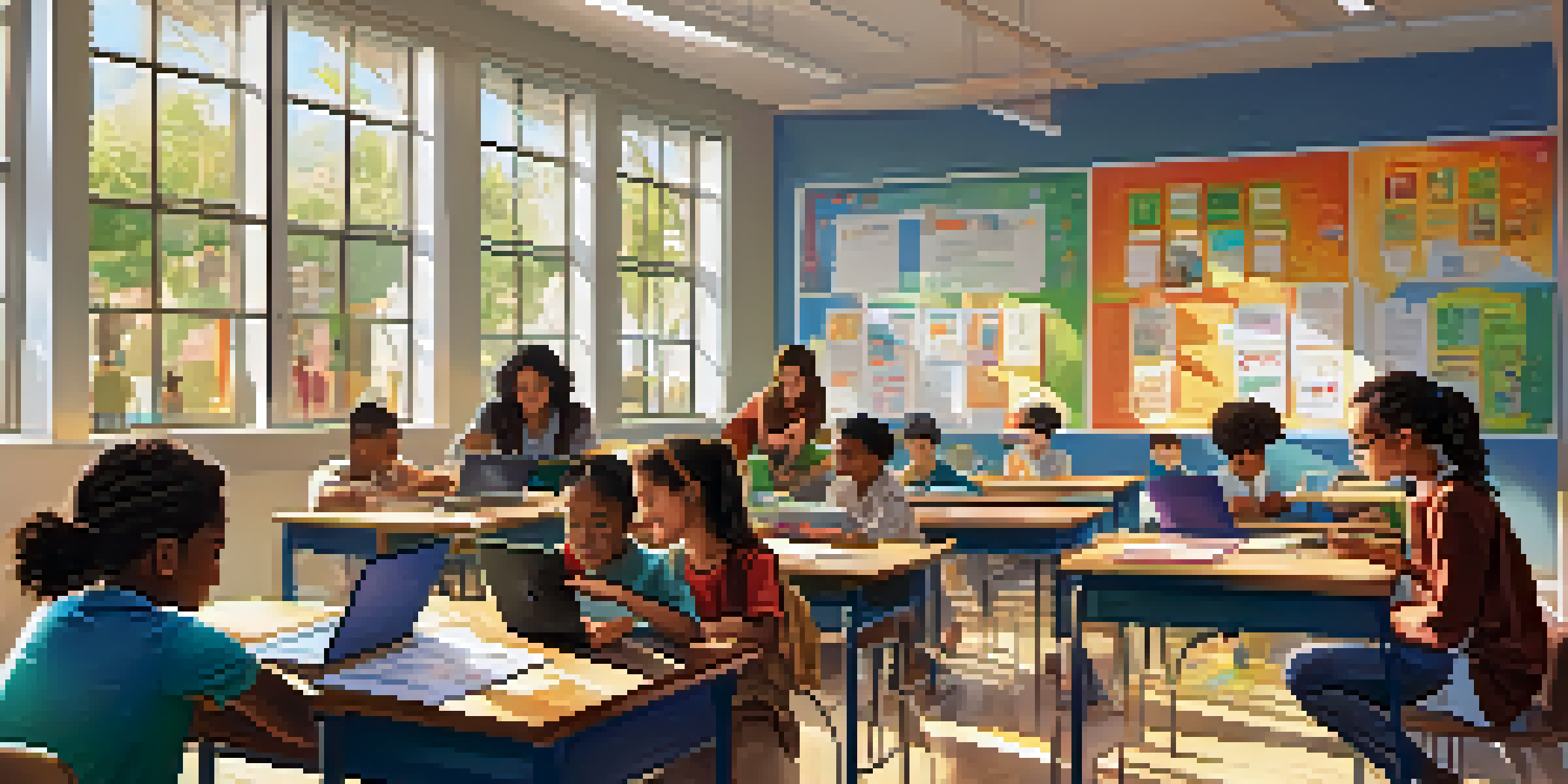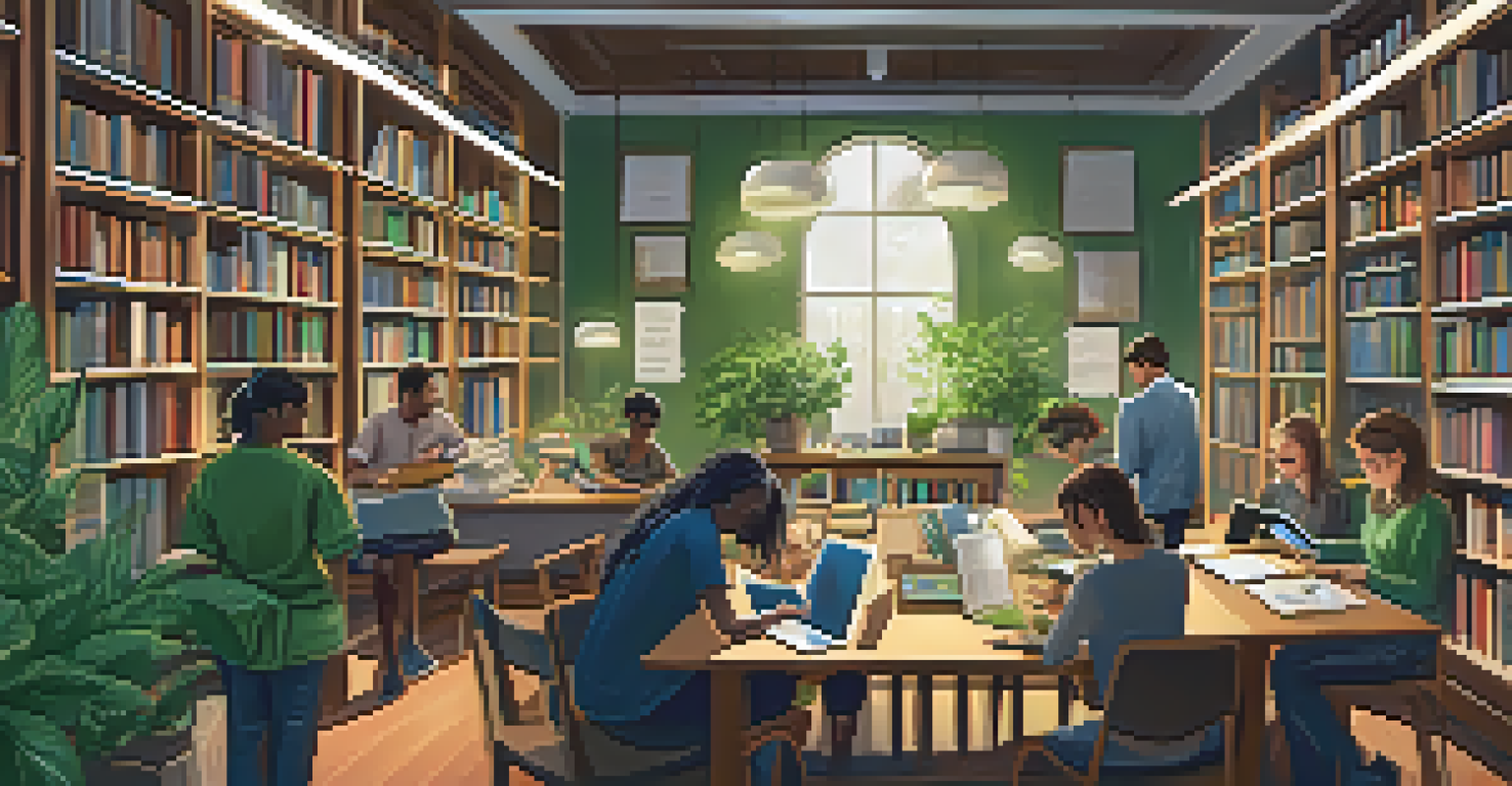Creating High-Quality Open Educational Resources for All

Understanding Open Educational Resources (OER)
Open Educational Resources, or OER, are teaching and learning materials that are freely accessible and openly licensed. This means that anyone can use, adapt, and share them without the hefty price tag often associated with traditional educational resources. By embracing OER, educators can promote inclusivity and enhance the learning experience for all students.
Education is the most powerful weapon which you can use to change the world.
At their core, OER can include a variety of materials such as textbooks, videos, quizzes, and even entire courses. Think of OER as the public library of educational content—available to everyone, regardless of their financial situation. This accessibility is crucial in today's diverse educational landscape, where not all students have equal access to resources.
Moreover, OER encourages collaboration among educators, allowing them to share their expertise and build upon each other's work. Just like a potluck dinner where everyone brings a dish, OER creates a rich buffet of knowledge that benefits everyone involved in the learning process.
The Importance of Quality in OER Creation
While the openness of OER is a significant benefit, ensuring their quality is equally essential. High-quality resources can enhance student engagement and improve learning outcomes, much like a well-prepared meal can delight your guests. When creating OER, it’s crucial to focus on clarity, accuracy, and relevance to meet the needs of diverse learners.

One way to ensure quality is by adhering to established standards and guidelines for educational materials. This can include aligning content with learning objectives and using clear, concise language. Think of it as following a recipe: if you skip essential steps, the final dish may not turn out as expected.
OER Promotes Accessibility
Open Educational Resources (OER) provide free access to a variety of teaching materials, fostering inclusivity and equal opportunities for all learners.
Additionally, involving peers in the review process can provide valuable feedback and elevate the quality of your resources. Much like a team of chefs refining a signature dish, collaboration can lead to a more polished and effective final product that resonates with learners.
Engaging Diverse Learners Through OER
Creating OER that engages diverse learners requires a thoughtful approach to inclusivity. Just as a garden thrives with a variety of plants, a rich educational environment benefits from diverse perspectives and learning styles. Incorporating different formats—like videos, infographics, and interactive quizzes—can cater to various preferences and enhance understanding.
The beautiful thing about learning is that no one can take it away from you.
Consider the example of providing audio versions of texts for auditory learners or using visual aids for those who grasp concepts better through imagery. By offering multiple ways to engage with content, you're not only supporting diverse needs but also fostering a more inclusive atmosphere where all learners can flourish.
Furthermore, actively seeking feedback from students about their learning preferences can guide the development of more effective OER. Just as a gardener regularly checks on their plants, staying attuned to learner needs will help ensure that your resources continue to thrive and evolve.
Utilizing Technology in OER Development
Technology plays a vital role in the creation and distribution of OER. With the vast array of digital tools available today, educators can easily design interactive and engaging materials that capture learners' attention. Imagine using software to create a dynamic online course that adapts to the learner's pace—this is the power of technology in OER.
Platforms like Google Docs, Canva, and various Learning Management Systems (LMS) can streamline the creation process and enhance collaboration. By leveraging these tools, educators can work together to produce high-quality materials, similar to how a team of builders collaborates to create a sturdy structure.
Quality Assurance is Crucial
Ensuring the quality of OER through established standards and peer collaboration enhances student engagement and learning outcomes.
Moreover, technology allows for easy sharing and access to OER. By hosting resources on platforms that are easily navigable, educators can ensure that learners find the materials they need without hassle, much like a well-organized library where everything is in its rightful place.
Licensing and Copyright in OER
Understanding licensing and copyright is crucial when creating OER. Open licenses, such as Creative Commons licenses, allow creators to specify how their work can be used, shared, and adapted. It's like putting up a sign in a park, indicating what activities are allowed—this clarity fosters a collaborative spirit among educators and learners.
When choosing a license, consider how you want others to interact with your content. Do you want them to modify it, or should they only use it as is? By clearly outlining your intentions, you protect your rights while encouraging others to build upon your work, similar to how an author might encourage fan fiction based on their stories.
Additionally, being aware of copyright laws can help avoid potential pitfalls. Just as one would check the rules before entering a game, knowing the legal landscape ensures that your OER is both ethical and compliant, paving the way for a more sustainable sharing culture.
Promoting Your OER for Maximum Impact
Creating high-quality OER is just the first step; promoting them is equally important. Think of it as planting seeds in a garden—you need to nurture them to help them grow. Utilizing social media, educational networks, and community forums can help raise awareness and attract users to your resources.
Engagement with other educators and institutions can also amplify your reach. Collaborating with like-minded individuals or organizations can create a ripple effect, much like how a single drop of water can create waves in a pond. Sharing experiences and insights can lead to greater visibility for your OER.
Technology Enhances OER Development
Leveraging digital tools in OER creation allows educators to design interactive and effective materials that cater to diverse learning styles.
Moreover, consider hosting workshops or webinars to demonstrate your OER in action. This not only showcases the resources but also builds a community around them, encouraging others to use and contribute to the shared knowledge pool.
Evaluating and Improving Your OER
The journey of creating OER doesn’t end once they’re published; continuous evaluation and improvement are key. Just like a chef tastes their dish before serving, educators should seek feedback on their resources to identify areas for enhancement. This iterative process ensures that your materials remain relevant and effective.
Gathering feedback can be done through surveys, focus groups, or informal discussions with students and peers. By actively listening to users, you can make informed adjustments that elevate the overall learning experience. It's like fine-tuning a musical instrument to achieve the perfect sound.

Additionally, staying updated on educational trends and technological advancements can inspire fresh ideas for your OER. By keeping an eye on the ever-evolving landscape, you’ll be better equipped to adapt and innovate, ensuring that your resources continue to meet the needs of learners.